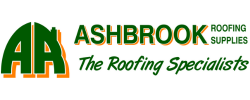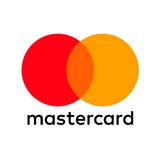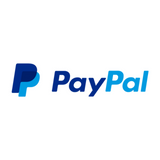If you're diving into the world of roofing, you've likely come across the term "roofing battens." But what exactly are they, and why are they crucial for your roofing project? In this guide, we'll explore everything you need to know about roofing battens, from their purpose to types and installation tips. Whether you're a DIY enthusiast or a professional roofer, understanding roofing battens is essential for a strong, durable and long lasting roof.
What Are Roofing Battens?
Roofing battens are thin strips of material, typically made from timber, metal, or plastic, that are installed horizontally on a roof. They serve as the foundation for roof tiles, slates, or other roofing materials. By providing a solid framework, battens ensure that your roofing materials are securely attached and evenly spaced. This structural support is vital for the longevity and performance of your roof.

Why Are Roofing Battens Important?
1. Structural Support: Roofing battens provide critical structural support for roofing materials. Without battens, roof tiles or slates would have no reliable anchor, which could lead to misalignment or even tiles sliding off.
2. Ventilation: Battens create space between the roof deck and the roofing material, which improves air circulation. This ventilation is crucial in preventing moisture buildup, reducing the risk of mold and mildew, and extending the life of your roof.
3. Weatherproofing: Properly installed battens help in aligning the roofing materials, which ensures that water runs off efficiently. This weatherproofing function is key to protecting your home from leaks and water damage.
4. Safety: A roof without battens could be unstable and unsafe. By evenly distributing the weight of the roofing materials, battens help maintain the structural integrity of the entire roof system.
Types of Roofing Battens
The choice of roofing battens depends on the type of roof, materials, and local building codes. Here are the most common types:
1. Timber Battens: Traditionally, timber battens are the most common choice. They are usually made from softwoods like pine or fir. Timber battens are affordable, easy to work with, and provide excellent structural support. However, they can be susceptible to moisture and rot if not treated properly.
2. Metal Batten*: Metal battens, often made from galvanized steel or aluminum, offer superior strength and durability. They are resistant to rot and pests, making them an ideal choice for long-lasting roofing projects. Metal battens are especially popular in areas with harsh weather conditions.
3. Plastic Battens: These are a modern alternative to timber and metal. Plastic battens are lightweight, resistant to moisture, and durable. They are often used in areas with high humidity or where rot-resistant materials are needed. However, plastic battens may not provide the same level of structural support as metal or timber.
Choosing the Right Size and Spacing for Roofing Battens
The size and spacing of your roofing battens depend on several factors, including the type of roofing material you're using and the slope of your roof. Generally, battens range from 25mm x 38mm to 50mm x 25mm in size. However, local building regulations may dictate specific sizes, so it's essential to consult with a professional or refer to your area's building codes.
The spacing of battens is crucial for the proper installation of roof tiles or slates. Incorrect spacing can lead to uneven alignment, which compromises the roof's effectiveness and aesthetic appeal. The spacing is typically determined by the size of the roof tiles or slates, as well as the pitch of the roof.
Treated Roof Battens and BS 5534
Using treated timber roof battens that comply with the BS 5534 standard is essential for ensuring the longevity, safety, and overall performance of a roofing structure. BS 5534 sets out the requirements for the durability, strength, and moisture resistance of battens, which are crucial for supporting roof tiles or slates.
Compliance ensures that the timber is properly treated to resist rot, insect attacks, and weathering, reducing the risk of roof failure over time. Moreover, using BS 5534-compliant battens helps ensure that the installation meets building regulations, which is vital for both legal compliance and insurance purposes.

How to Install Roofing Battens
Installing roofing battens requires precision and careful planning. Here's a basic step-by-step guide:
1. Prepare the Roof: Before installing battens, ensure that the roof is clean and free of debris. Inspect the roof deck for any damage and make necessary repairs.
2. Mark Batten Placement: Measure and mark the placement of your battens based on the size and spacing requirements of your roofing material. Use a chalk line for accuracy.
3. Install the Battens: Start at the eaves and work your way up. Secure each batten to the roof deck using nails or screws. Ensure that the battens are level and evenly spaced.
4. Check Alignment: As you install the battens, regularly check that they are properly aligned. Misaligned battens can cause problems when you install the roofing materials.
5. Install Roofing Material: Once the battens are in place, you can begin installing your roof tiles, slates, or other roofing materials.
Common Mistakes to Avoid
When installing roofing battens, there are a few common mistakes to avoid:
- Improper Spacing: Incorrect batten spacing can lead to issues with the alignment and stability of the roof tiles. Always follow the manufacturer’s recommendations and building codes for spacing.
- Using Untreated Timber: If you're using timber battens, ensure that they are properly treated to resist moisture and rot. Untreated timber can lead to early rot, weathering and insect infestation and costly repairs.
- Neglecting Ventilation: Battens should be installed in a way that allows for proper ventilation. Poor ventilation can lead to moisture buildup and damage to your roof structure.
Roofing battens may seem like a small component in the grand scheme of a roofing project, but they play a crucial role in ensuring the durability, safety, and effectiveness of your roof. Whether you're using timber, metal, or plastic battens, understanding their function and proper installation is key to a successful roofing project.
By choosing the right battens and following best practices for installation, you can protect your home from the elements and enjoy a roof that stands the test of time. Always consult with a roofing professional to ensure that your battens meet local building codes and are suitable for your specific roofing material.

Frequently Asked Questions (FAQ)
Q: Can I install roofing battens myself?
A: Yes, with the right tools and knowledge, you can install roofing battens yourself. However, it’s always a good idea to consult with a professional to ensure everything is done correctly.
Q: How long do roofing battens last?
A: The lifespan of roofing battens depends on the material. Timber battens, if properly treated, can last several decades. Metal battens generally have a longer lifespan due to their resistance to rot and pests.
Q: Are roofing battens necessary?
A: Yes, roofing battens are necessary for the proper installation of roofing materials. They provide structural support, improve ventilation, and contribute to the overall stability and durability of the roof.
Q: Can roofing battens be reused?
A: In some cases, roofing battens can be reused if they are in good condition. However, it’s often recommended to replace battens during a reroofing project to ensure optimal performance.
If you require more support, you can contact us on 01629 732988 We have been in the industry for over 45 years and we have came across almost everything to do with roofing. If you are looking at getting the supplies for a new roof, we can supply the materials that you require from Ashbrook Roofing Supplies.













